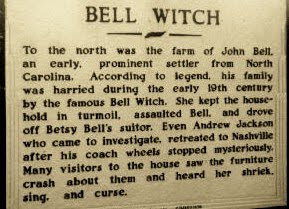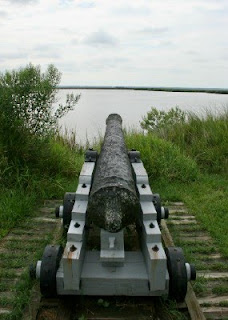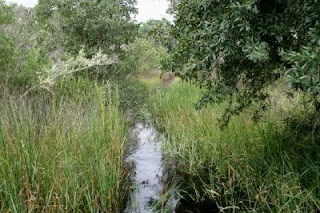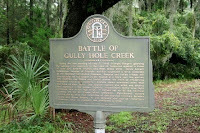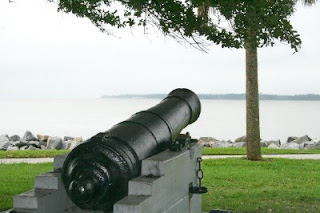 Although the story has been known in the "Wiregrass Region" of South Alabama much longer, it developed a national fascination after it appeared as a chapter in noted writer Kathryn Tucker Windham's popular book, 13 Alabama Ghosts and Jeffrey. She called it the tale of the "hole that will not stay filled."
Although the story has been known in the "Wiregrass Region" of South Alabama much longer, it developed a national fascination after it appeared as a chapter in noted writer Kathryn Tucker Windham's popular book, 13 Alabama Ghosts and Jeffrey. She called it the tale of the "hole that will not stay filled."It is the story of Bill Sketoe. Or rather, the story of his ghost.
Although Mrs. Windham, using the information available to her at that time, wrote that Sketoe was a native of Spain, he actually was born in South Carolina in 1818. His father, however, was from Spain. Along with many other members of his family, he migrated down to Dale County, Alabama, during the years before the Civil War.
The exact details of the events leading up to his hanging are murky. Sketoe's family maintains that he was a Methodist minister and Confederate soldier who had hired a substitute to fill his place in the ranks of the Southern army while he came home to care for his sick wife. As the story goes, he was on his way back home from a visit to the county seat of Newton when he was taken prisoner, accused of being either a deserter or enemy of the South, and hanged by members of Captain Joseph Breare's cavalry company.
Taken to the river bank opposite Newton and placed in the back of a buggy or wagon, he had a noose placed around his neck with the other end attached to the limb of a post oak tree. Sketoe, however, was a tall man and when the whip was cracked on the backs of the horses and the buggy or wagon driven out from under him, he was able to keep himself alive because his toes touched the ground. To solve this situation, a wounded soldier in Breare's company used his crutch to dig out a hole under Sketoe's feet so he would hang and die.
For more than 100 years, for reasons that no one could explain, the hole mysteriously was swept clean each night. Many thought that the swinging feet of Bill Sketoe's ghost swept away any straw, sticks or other debris that fell into the hole. Others thought that a local resident kept the hole clean as a reminder of his friend's unfortunate death.
Whatever the case, the "hole that will not stay filled" became a major part of Alabama folklore. The real facts of the story are a bit different than the legend, which is common with such tales. To learn more about the ghost of Bill Sketoe and the true story of the events surrounding his death, please visit www.exploresouthernhistory.com/sketoe.

